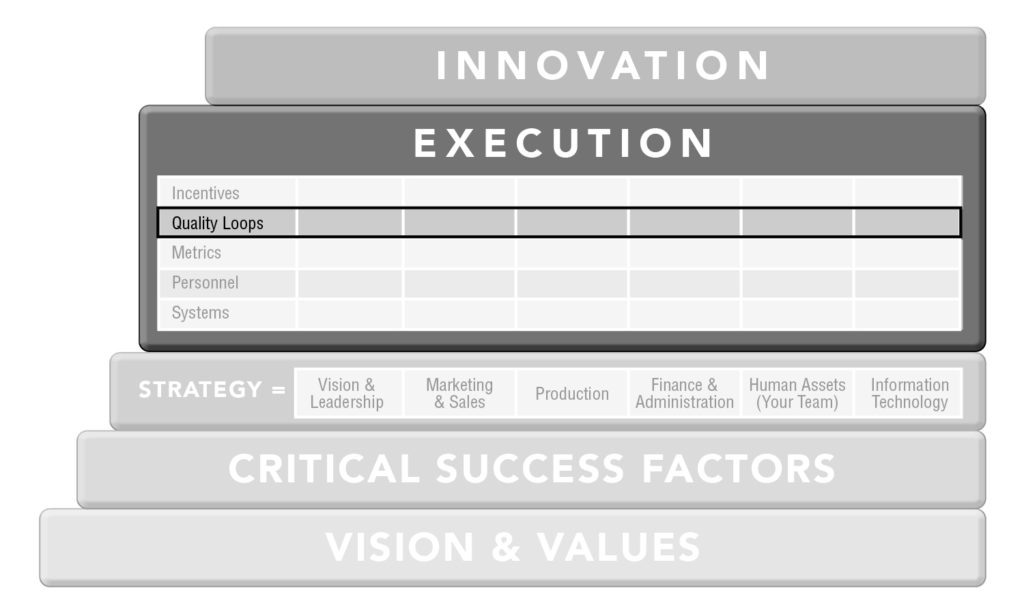Would you like to simultaneously eliminate micromanaging your business’s personnel, empower them to do more, increase their job satisfaction, and ensure your business runs smoothly?
If so, please read on.
Larry, in his mid-60’s, owned an industrial fastener company that seemed to run on autopilot. But when their Accounting Manager was suddenly out for a month for surgery, the company almost failed.
The company had been operating for almost 30 years and most of their employees had worked for them much of this time.
This meant that many employees had been in their positions for years and most of them just did “their own thing”; therefore, very few business processes were documented.
The result of this was that most people carried everything around in their heads. This did not cause any apparent business planning problem until something unusual happened.
Things Turn Bad
When their Accounting Manager was out for a month a key financial management process was overlooked. As a result, the funds in the business checking account plummeted, and the company was put at risk from a cash management position.
When the manager returned, they remembered the thing they had forgotten to tell anyone about. Once this process was resumed, the organization returned to normal.
This led Larry to realize they needed to add structure to the company.
Subsequently, he learned about the use of business planning Quality Loops and that they included both processes and pre-designated corrective measures to make sure the processes operated correctly.
The use of Quality Loops meant that if others had to cover for someone when they were out, or the position was open, personnel would know exactly what to do and how to handle things if there were any problems.
Quality Loops
Like Larry, you may want to fully document your processes and remedial steps to be taken when expected results are not obtained. Use of Quality Loops can do this, while empowering your staff to do more and increase their job satisfaction because of not being micromanaged.
Quality Loops are written documents that function as a key tool in ensuring that your business’s processes continue to operate as they are designed by including a self-correcting mechanism within your structured execution plan.
Quality Loops can either be hard-copy documents or online text.
If a process stops functioning properly, the individual or team that is executing the process can rectify the problem by use of a Quality Loop that is specific to that process without the business owner, company leadership, or its management needing to get involved.
Business planning Quality Loops assist your company to function methodically, which in turn fosters an automated approach to your business.
As can be seen in the below diagram from my upcoming book, Work Less, Make More and Have Fun in Your Business, Quality Loops are based upon your Systems, Personnel, and Metrics.
Execution Area—Quality Loops
Use of Quality Loops also empower and release your personnel by giving them the freedom and flexibility to resolve problems and issues themselves, and not be micromanaged. Because no one likes to be micromanaged.
A current example of this is the increasing power and authority being given to telephone support personnel to resolve a customer’s problem themselves. This enables their staff to solve issues on the first call, without having to ask their Manager for permission to take certain actions.
This has resulted in both tremendously increased customer satisfaction and employee morale.
A Quality Loop integrates and combines problem determination, accountability, and coaching to maintain and improve the quality of and the output from each of your processes.
There are four steps in creating a Quality Loop.
1. First Things First
Identify where you need to define a Quality Loop by starting with your most important or vulnerable areas. Initially you may decide not to define a Quality Loop for each of your processes, but eventually as you observe their benefit you may include them in all your processes.
2. Calibrate Your Barometer
Use the metric for the related process to determine if the ongoing measurement is within or outside of the acceptable range of the metric. In this way the metric functions as a barometer for determining whether or not the process is operating correctly.
3. What Are We Going To Do?
For the situations when the metric value is outside of the acceptable range, you need to define the steps that should be taken to correct the improperly functioning process.
This remedial system (or set of steps) may include various diagnostic steps. This self-diagnosis will likely include directions to review the documents that define how the process is supposed to be executed to determine if a step is being omitted or executed incorrectly.
An analysis of the results from executing the diagnostic steps should guide the individual or team executing the process to a range of actions to undertake. These steps are correlated to the metric’s value and the diagnostic results.
The actions that each person takes who is involved with the Quality Loop must be stated in such a way that there is accountability for each person’s actions.
4. Know When To Call The Boss
The Quality Loop must also include directions stating when management needs to be apprised of the problem situation because of its severity. This action includes determining what level of company management must get involved.
The Metric Is The Kingpin
The accuracy and reliability of the metric that is related to the process is paramount to the Quality Loop for ensuring that correct information is utilized, and unnecessary actions are avoided.
Process redefinition or process redesign are also an integral part of the Quality Loop concept.
This means that if the metric is still out of the acceptable range after the remedial system’s steps have been executed, something may have changed in the business’s overall environment, thereby necessitating a change to the process.
This examination of possible changes to the process results in a systematic approach to process redefinition or process redesign within your company.
It is important to note that when you combine these steps, you have created the foundation for your business’s entire process quality initiative.
Where To Start
If you would like to:
- Get out of micromanaging your business’s personnel
- Fully document your processes and related corrective actions
- Empower your staff to be more productive
- Increase their job satisfaction
- Ensure your business runs smoothly at all times
Then consider implementing the use of Quality Loops within your company.
Their use will establish quality feedback loops that will assure your personnel and management know what actions to take if the business’s operations go awry.
If you could use assistance with implementing Quality Loops within your company, please contact us using the information below so we can be a resource to you in this crucial area.
Fountainhead Consulting Group, Inc. is an Innovation and Business Planning firm. During the past 21, years we have shown over 1,200 companies how to achieve their goals by using our unique, comprehensive, and systematic FastTrak Innovation Program™, Innovation Academy™, and Structure of Success™ methodologies. Using the components in these methodologies, each month we examine an aspect of how to transform your business or organization into a true 21st Century enterprise.
Office: (770) 642-4220
George.Horrigan@FountainheadConsultingGroup.com
Tags: Business Planning, entrepreneur, front end of innovation, innovation, invention, small business consulting, small business planning, start a business

